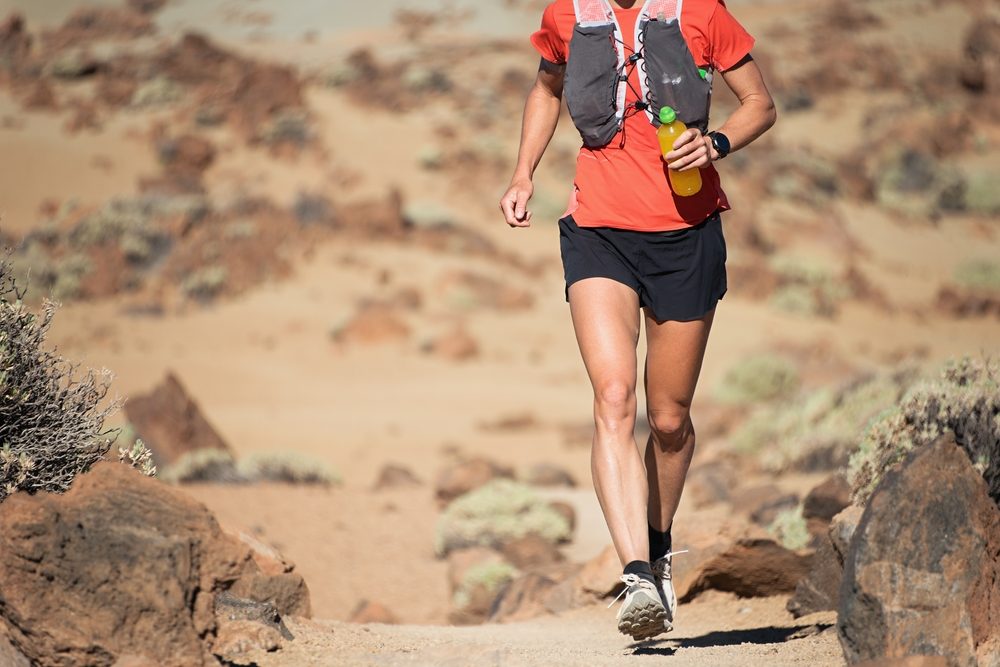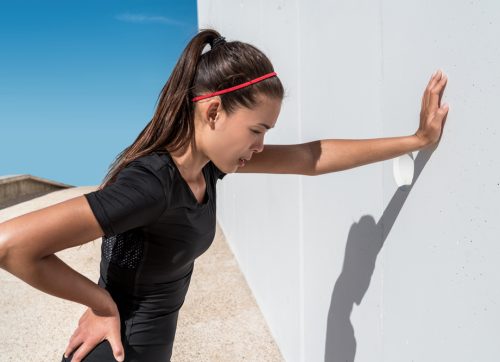
Getting into Trail Running
Trail running is one of the best ways to get out into nature and get some exercise.
- Author:
- Jodi Richard
- Date:
- January 3 2025
You can run laps in an urban park or on a country road and watch nature as you roll by it; you’re just not in nature like you are on a trail. Navigating trails by following blazes or paths in the woods is far from running on a road or a park path. Why is it so different? To many runners, why is it so much better than road running? Because you’re in the woods hearing birdsong, squirrels leaping and chattering, or deer ambling by, not cars, sirens, or other people talking. You’re there in the woods where you can easily touch a tree, feel the coolness of the shade, hear the rambling of a stream, the squish of mud under your shoes. All of that enhances the running experience.
So, how do you approach trail running as a beginner? Running has many disciplines, and all of them are dependent on technique. Running on a road differs from running on a track; running on a trail is entirely different.
- Technique: Running on a trail requires a different technique than running on a road because of the obstacles on the ground. You will come across rocks, roots, holes, boulders, downed trees, and more. To quickly react to these hazards, shorten and quicken your stride and pick your feet up. This change in form will help you respond to a loose rock or a hidden protrusion more quickly and hopefully lessen the chances of a rolled ankle or a fall.
- Safety First: When heading out on a trail, run with someone or ensure people know where you’re going and when you plan to return. When you start, try running on a popular trail where you know you will see others just in case something happens. As you get more comfortable on trails and in nature, you can head out into more remote and challenging trails. Always ensure you have some way to contact others, even if you are in a no-service area. Technology today offers many ways to contact people in an emergency, such as the satellite ability of phones or devices such as the Garmin InReach Mini.
- Research the Trail Before You Go: Many apps exist to help you find trails near you, such as AllTrails, Trail Run Project, or Cal Topo. You can find trails near you using these apps with detailed descriptions of the length, difficulty, and elevation gain. The apps also give you directions to the trailhead. Always know where you are going, what you are attempting, and what the weather will be like on the day of your run.
- Climbing Steep Terrain: Running up hills, especially steep ones, is always challenging. You can scramble over rocks, trees, loose dirt, or mud on a trail. Sometimes, hiking up a hill is more efficient and faster than attempting to run up one. Remember to keep moving, lean into the mountain, and keep the effort level the same throughout the climb. If the climb is long or quite steep, move a certain number of steps before taking a short break, then continue counting steps and resting the climb until you reach the top. Embrace hiking up steep hills; it’s all part of trail running.
- Descending the Trail: What goes up must go down. Descending trails is as much a part of trail running as climbing them. When descending, lean downhill and allow your feet to follow. Yes, this is scary, especially if the terrain is technical. Practice on smoother, less steep terrain to get a feel for it, and then as your trail running advances to more technical and steeper terrain, practice there too. Remember to keep your feet light with short, quick steps. Leaning back and heel striking on the way down limits your reaction time and almost always causes you to fall.
- Look Ahead: Whether on the flats, going up, or descending, always look where you’re going, not at your feet. Try to look about two or three steps ahead to plan your steps.
- Recommended Gear: Whether heading out for 3 or 30 miles, you should ALWAYS carry the following gear with you on a trail run.
- Phone for emergency calls, trail information/route, and to take photos of the beautiful scenery. If you are venturing into territory without service, look into a Garmin InReach or other satellite communication device.
- Trail running shoes are a must! Trail shoes, designed to handle uneven terrain on trails, include sticky soles to handle rocks and roots and lugs to handle mud. Trail shoes also have toe bumpers to protect your feet from rocks and roots and stronger sidewalls to keep them from tearing. Trail shoes also have a lower profile to help you feel what’s under your feet and to keep you from rolling your ankles on uneven terrain.
- Carry food and water to keep you hydrated and fueled. When running in the woods or mountains, anything can happen, so having extra hydration and food is never a bad decision.
- A light rain jacket just in case it rains or winds pick up and the temperature drops. Of course, you should check the weather before you head out, but strange weather can happen, so having a jacket to keep you dry and warm is a must.
- Hiking poles are helpful if the terrain is steep. Poles can help you climb more quickly and sometimes help you descend in tricky terrain. Poles also help you stay upright if you trip.
- For bigger adventures, you may want to wear a hydration vest that can hold extra food and water, a water filter for collecting water in streams, a first aid kit, a whistle, an emergency blanket, and a headlamp.
Trail running requires much more research and gear than road running, but the extra work needed to hit the trail safely is worth it. Being in nature with a few friends or solo is excellent exercise and good for your mind and soul.
Are you ready to take the journey?
Take the journey and find your nature guide.


